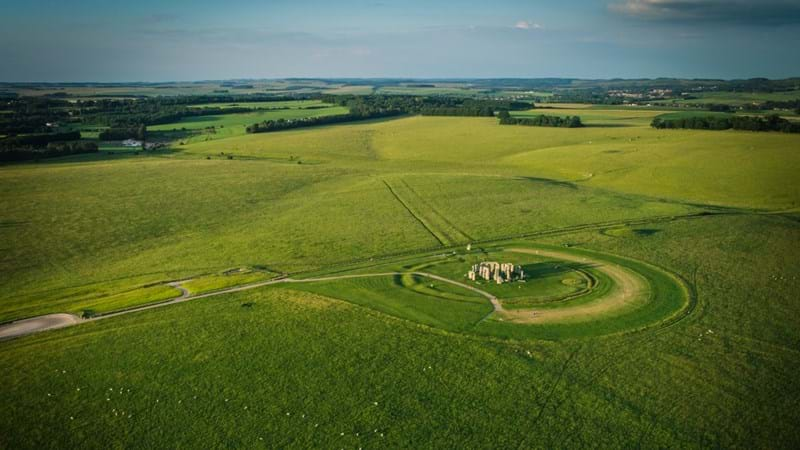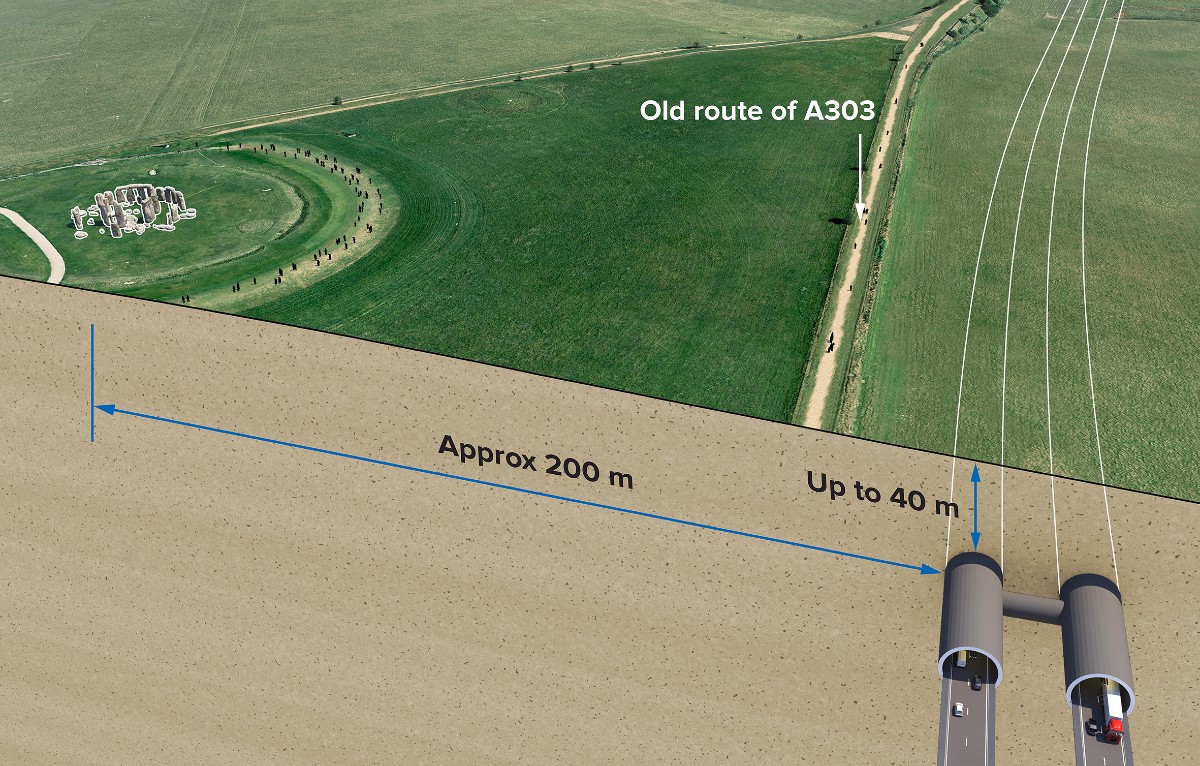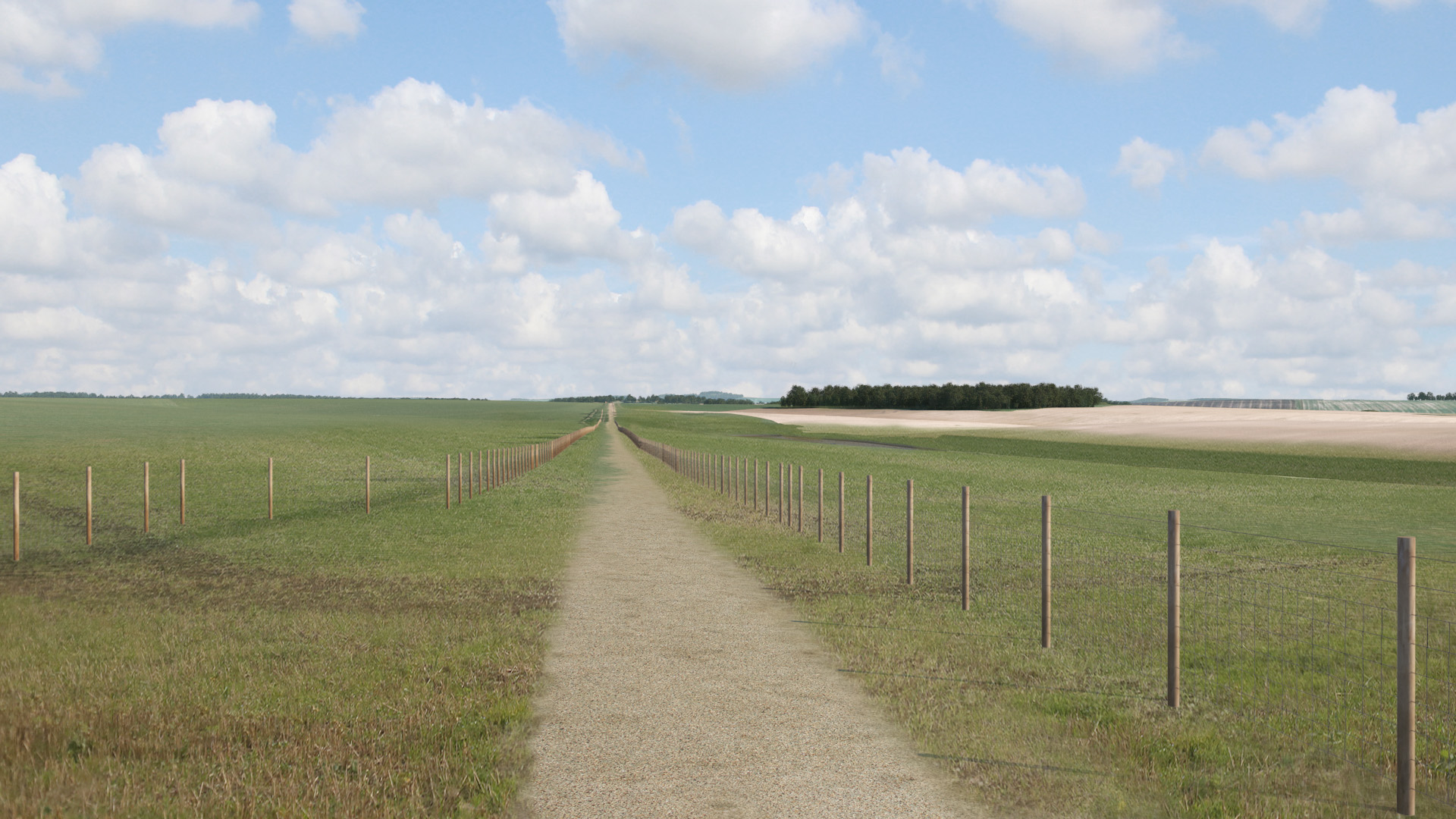Fact-checker
We reveal the facts behind some of the most common myths and misconceptions about the A303 Stonehenge scheme.

Myth #1 - The tunnel is going under Stonehenge
One of the most common myths is that the tunnel will be going under Stonehenge. This is just not true. It will in fact be further away than the current road. More than 200 metres to the south of Stonehenge – the length of two football pitches - and up to 40 metres underground.

Myth #2 - Stonehenge will be 'bulldozed'
You’ll not be seeing bulldozers at Stonehenge – and the stones will not be touched.
During the main construction, the only equipment (above ground) in the World Heritage Site will be at the tunnel entrances and cuttings. These are hidden by the natural lay of the land and not visible from Stonehenge.
The closest work to the stones will be at the end of the project on the existing A303, when we turn it from a busy road into a new dedicated route for pedestrians, cyclists and horseriders.
Myth #3 - Stonehenge will be damaged during construction
You may have heard that Stonehenge will be damaged – from vibrations from digging the tunnel or the ground settling.
Again – not true.
As we explained in #1 the tunnel isn’t actually that close to Stonehenge itself – and the way we plan to dig it will prevent harm. A sophisticated tunnelling machine, similar to the type used in major infrastructure projects all over the world, will be specially designed for the ground conditions within the World Heritage Site.
Myth #4 - We'll lose the free view of Stonehenge
If you're a driver, this is true. But it’s not the whole story. By removing the old A303, walkers, cyclists and horse riders will be able to see Stonehenge whenever they like using a new dedicated public right of way being created along the route of the current road.
Removing the sight and sound of the noisy, busy road from most of the World Heritage Site will return the Stonehenge landscape to something like its original setting, allowing people to enjoy the ancient stones and explore and understand many other fascinating prehistoric monuments in the surrounding landscape.

Myth #5 - The traffic is caused by people slowing down to look at the stones (just put a fence up instead)
People slowing to look at the stones is only a small part of the problem.
The main reason for ongoing congestion is in fact that the existing road simply can’t cope with the volume of traffic - regularly carrying twice the amount it was designed for.
A fence wouldn’t solve this and would damage those things that make the World Heritage Site special - creating a barrier, something we are trying to remove by placing the A303 in a 2-mile tunnel.
Myth #6 – Winter solstice views will be spoiled by light pollution
Vehicle headlights can clearly be seen now from Stonehenge at the winter solstice.
The road alignment of the new A303 has been carefully chosen to avoid any impact on the view of the sun setting at the winter solstice from Stonehenge – there will be no lit signs on the outside of the tunnel or on the road approaching it. Traffic travelling from the tunnel and along the cutting will be approximately eight metres below the existing ground level, meaning headlights that currently disrupt the night sky will be removed.
Lights from the nearby Longbarrow roundabout will also disappear from view, as the junction will move approx. 600 metres west, outside of the World Heritage Site.
Far from ruining winter solstice views, the scheme will enhance the dark sky environment in the World Heritage Site.
Here's what Professor Tim Darvill from Bournemouth University has to say on the subject:
